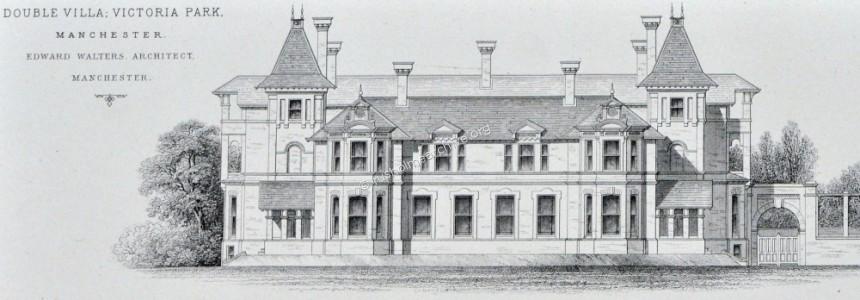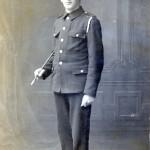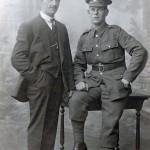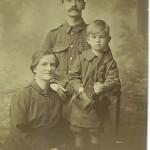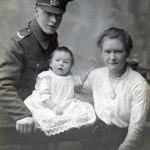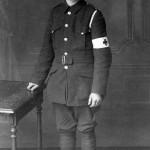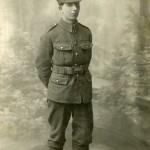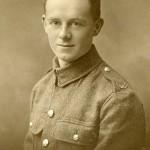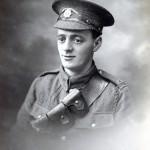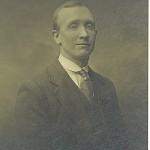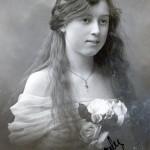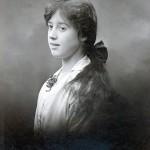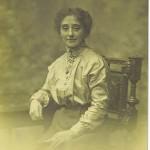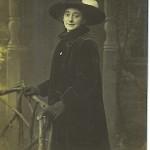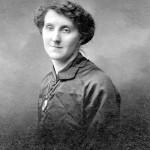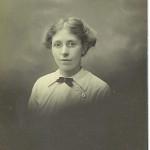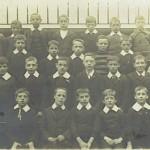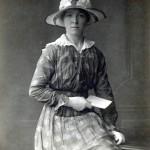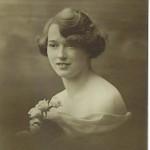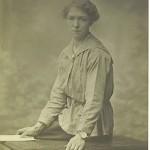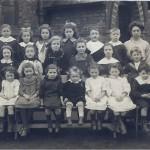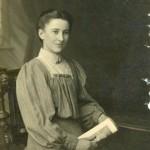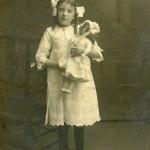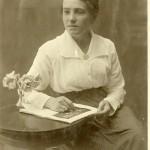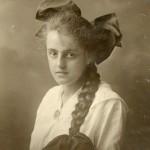Rusholme & Victoria Park Archive
'A True Likeness'
Birch Studio family portrait below of unknown sitters
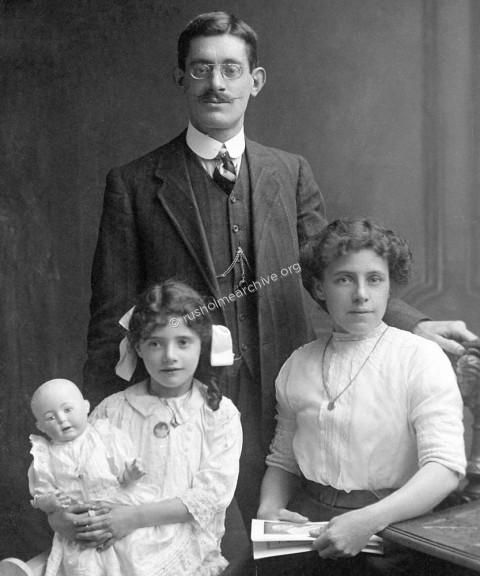
Rusholme seems to have had a total of fifteen photographers working at various times in the district.
Below are listed the photographers, their address and dates working from that address. There is no conclusive proof that an address necessarily means a studio. Also a photographer sometimes provides more than one address and other dates. I have added in brackets these additional dates.
In one or two instances I have also listed Fallowfield photographers.
If you are looking for other Manchester & Lancashire photographers the very useful book, ' Lancashire Professional Photographers, 1840-1940' by Gillian Jones, (published by Photoresearch) may help you.
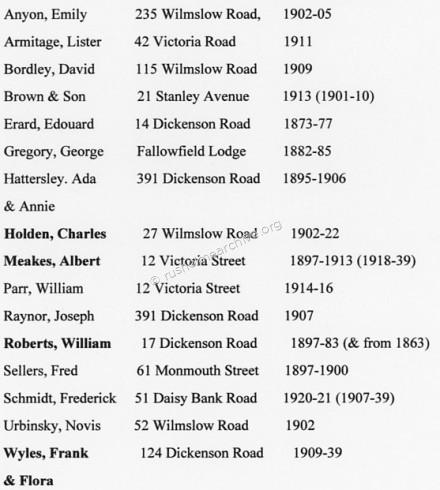
Where I have listed the name in bold above then I have some photographs which are shown under the names below.
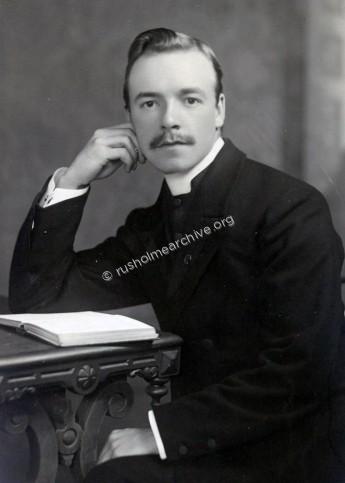
Photograph above from D Bordley of 115 Wilmslow Road studio; unknown Minister, below is an advert for his studio in a 1909 Rusholme Pavilion programme.

William Roberts 1836 - 1886
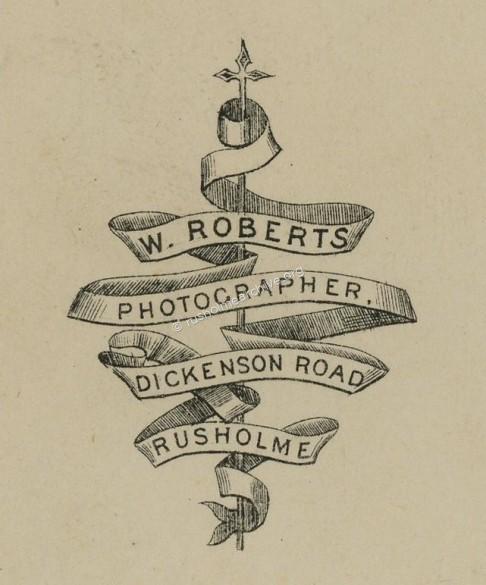
William Royle very clearly identifies William Roberts in his History of Rusholme. Here below is the same entry found in the Law & Order page where a photograph by Roberts is shown.
William Royle referred to William Roberts as the 'village photographer' who during the second half of the 19th century had a studio on Dickenson Road.
William Royle described Roberts;
'Then there was William Roberts, the village photographer, who was a genial soul and a very general favourite. He was the local historian and collected all the facts and traditions concerning the ancient history of Rusholme. Almost every person in the village was known by him, and some of the pleasantest hours of my youth were spent in his company.'
I have done some research about William Roberts finding some simple bare facts from genealogical websites.
Born in 1836 the earliest reference to William I can find is in the 1851census, age 15 he is living with his parents and two younger brothers in Birch Lane, a road on the NW side of Rusholme. His father is described as a gardener and William as a seedsman apprentice. Ten years later in the 1861 census William is living with his mother in Dickenson Road, Rusholme. Mary Roberts is head of the household, now a 55-year-old widow and a caretaker. William is described as a photographic artist and his brothers are a clerk and warehouseman. Also staying at the house is Rachel Hague, a visitor and daughter of an engineer.
In 1863 William married Rachel and they continued to live in Dickenson Road where 2 years later they had a daughter called Helena. Sadly, four years later in September 1869, Rachel passed away and was buried in the graveyard at St James, Birch-in-Rusholme. The 1871 census still shows William and his daughter living in Dickenson Road with a 48-year-old servant, Elizabeth Davies.
Sometime after 1871 William married Jane and in 1875 they had a son Stanley, and William is still identified as a photographer. The 1881 census has much the same information albeit all of the occupants are 10 years older, and the two children, Helena, (16) and Stanley, (6) are both described as scholars.
In 1886 William Roberts died age 50 and was buried on February 17th, 1886 by Rev. George Anson in the graveyard at St James, Birch-in-Rusholme. I cannot find a record as to whether he was interred with his first wife, but some 20 years later his second wife, Jane passed away and she too was buried, (with William?) in the Birch-in-Rusholme graveyard.
The photographs that I have include the CDV of Sergeant Edward Pye,below, (and a full description of his career can be found on the Law & Order page), a curious CDV of a Silver belt buckle and two portraits; two young children and the other perhaps a mother and her two children(?); a photograph of a butchers boy, apparently taken in a back alley,(see the steel attached to his apron string), a group of Rusholme 'worthies' (?), and finally at the bottom, a gravestone for two children. I have researched the family story behind this rather sad photograph.
Sergeant Edward Pye, (retired 1890) by William Roberts
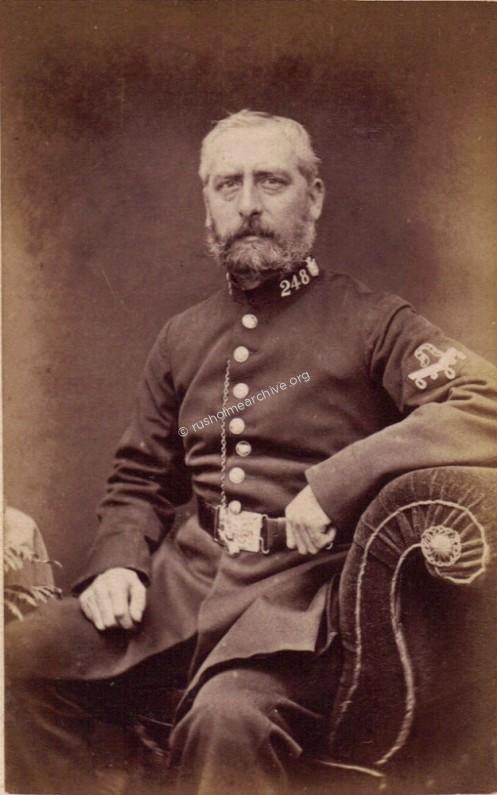
CDV below commemorating Bennett Greig of Rusholme, by William Roberts
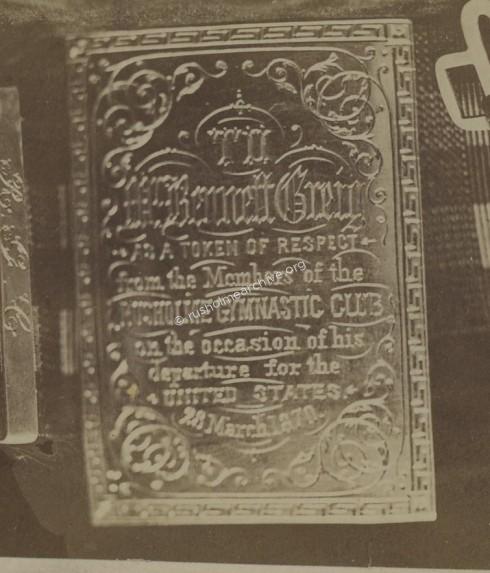
The Greig family lived in Dickenson Rd and details from the 1861 census show the family included Bennett, the youngest son.
19 year old Bennett Greig, perhaps as so many other young men at this time emigrated to America, presumably to seek their fortune - and what became of him is at present unknown, perhaps descendants of this young man are still alive in the USA more remains to be researched…………you can read more about the Greig family on the 'Rusholme Public Hall & Library' page.
The portrait of the two young children below is not in very good condition. I imagine that they are a brother & sister and would appear to be quite well clothed in their 'Sunday best', unfortunately during the probably long exposure the boy has slightly moved his face & right hand - so he does look a little blurred! On the back of this cdv, William Roberts has described himself as 'artist' (& near the Public Hall).
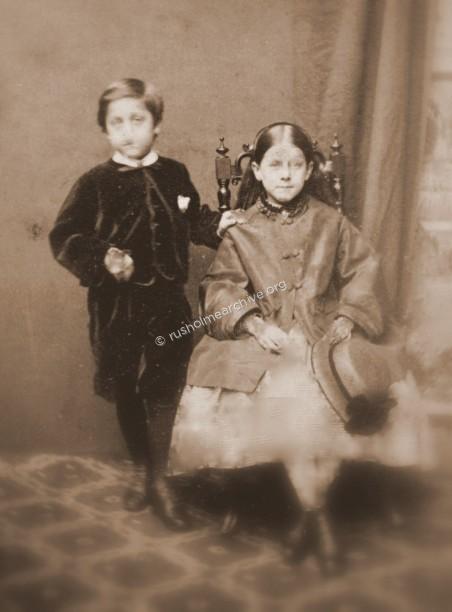
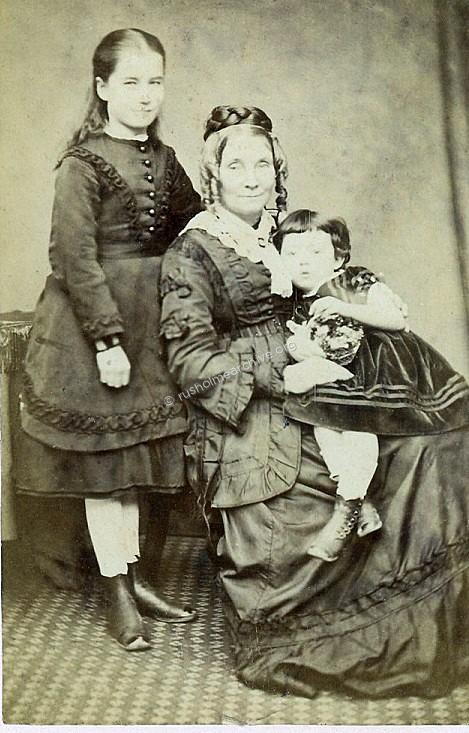
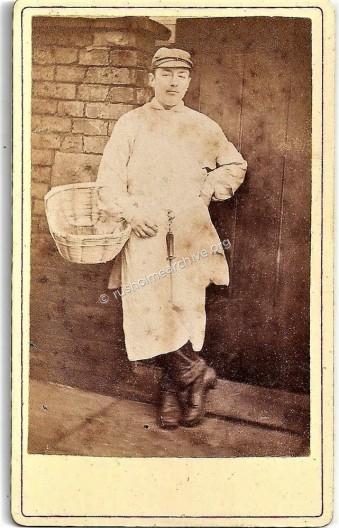
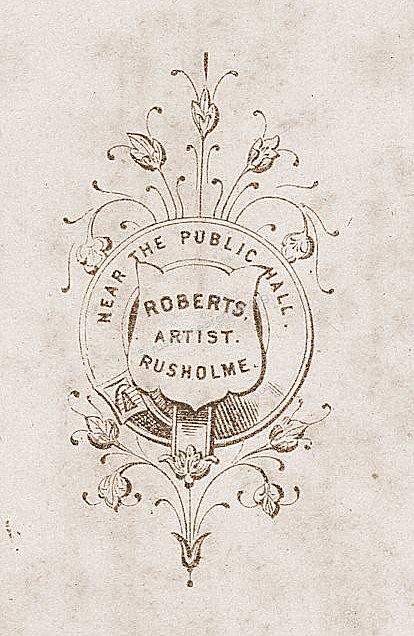
Below is an unusual study of a family group standing, presumably at the door of their home, no evidence of who tha family is but this image is an interesting departure from the usual rigid pose in a studio.
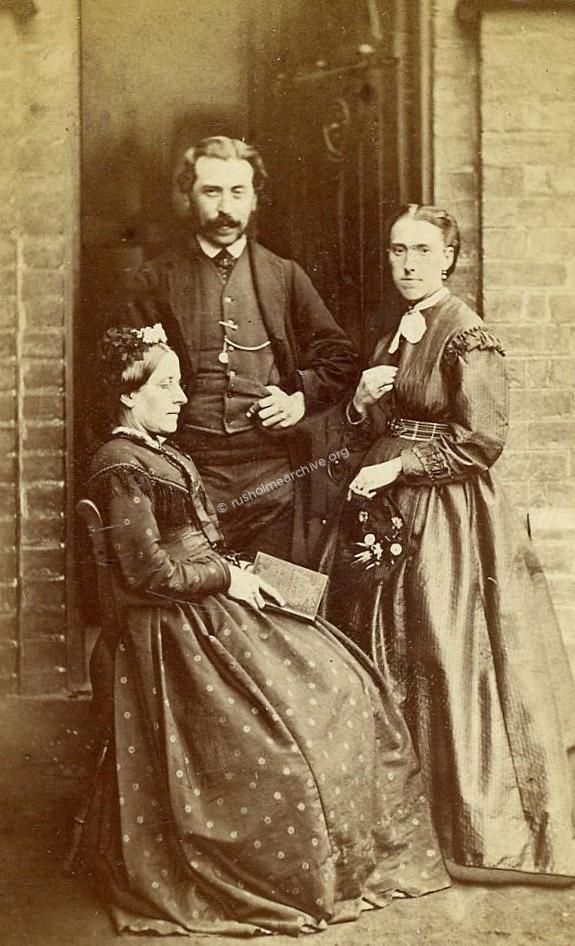
Another un-named portrait below, on the back is a note, 'Biggins, Canada'.
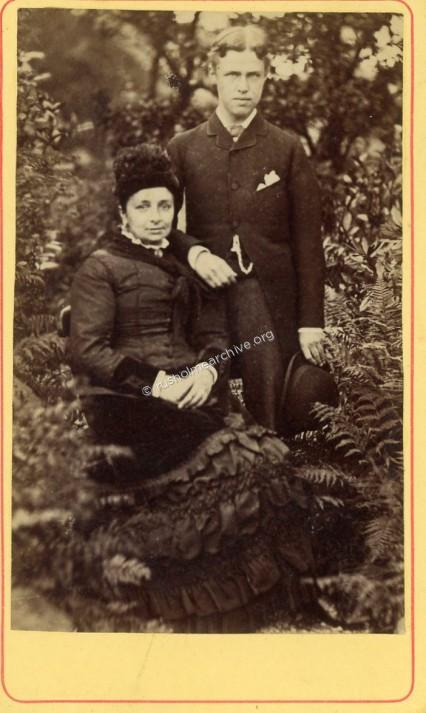
The photograph below of a young boy in a scholar's (?) uniform might have the surname of Yerburg?" There is a suggestion that the boy may have been a scholar at Chetham's School in Manchester.
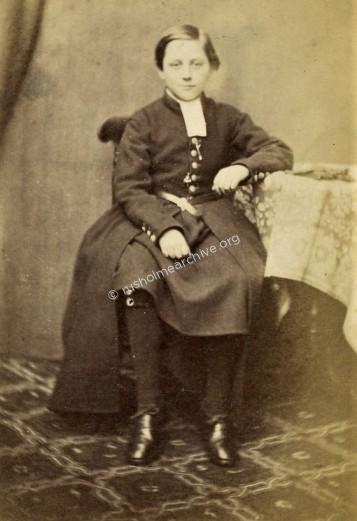
The photograph below was taken circa 1860-65 by William Roberts, and found by Joop Campfens who lives in Holland. It amongst some family papers and searching the web for the photographer’s name, (on the back of the photo) he came across rusholmearchive and has now kindly given it rusholmearchive.org. The inevitable question is how did that photograph, taken 150 years ago, find its way to some family papers in Holland? Although the sitters are not identified the man centre right with the top hat may be William Ulph, a member of the Rusholme Board of Health.
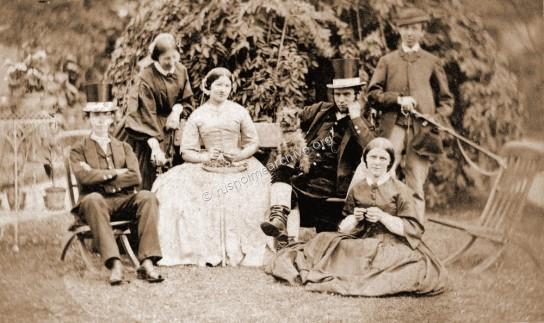
Below, a gravestone for two young brothers in St James, Birch-in-Rusholme.
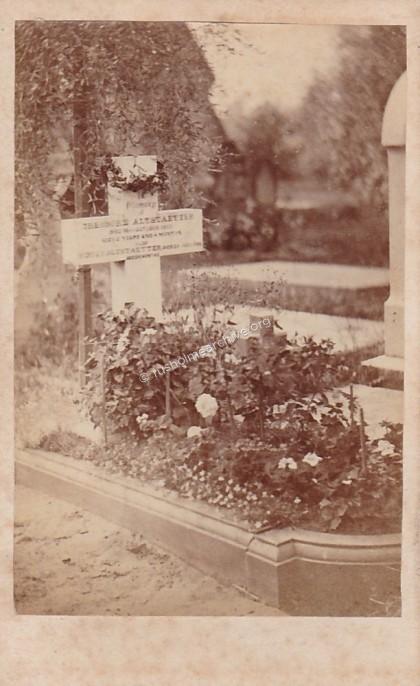
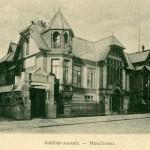 The photograph above is a grave in St James Church, Birch-in-Rusholme, taken by William Roberts circa 1866(?). The headstone is for two young brothers, Theodore and Sidney Altstaetter. Theodore died 16th October 1865 when he was two years and four months; his brother Sidney died the following year just six months old.
The photograph above is a grave in St James Church, Birch-in-Rusholme, taken by William Roberts circa 1866(?). The headstone is for two young brothers, Theodore and Sidney Altstaetter. Theodore died 16th October 1865 when he was two years and four months; his brother Sidney died the following year just six months old.
Their father, Gustavas Altstaetter, had arrived in London in 1852 from Wiesbaden, Germany when he was just 19 and like so many other German immigrants he settled in Greenheys in Manchester. In 1856 he married Eliza Alfreda Henderson at Manchester Cathedral, the wedding certificate showing his occupation as ‘Corresponding Clerk’. His father, John Philip Altstaetter is described as a ‘Merchant’ whilst Eliza’s father is described as a ‘Journalist’.
Gustav Altstaetter played a role in the early years of the Schiller-Anstalt in Manchester, an institution founded by the German community, (photo inset above right). Its most notable active member was Friedrich Engels and there is some evidence that Gustavus was acquainted with Engels.
Gustavus and Eliza had four children, the eldest was Annie, born in 1861, then Theodore, followed by Sidney and then, Alfred Philip Gustav, born in 1865.
Very sadly, in 1869, the burial records of St James, Birch-in-Rusholme show that Gustav, only 36 years old was buried, presumably with his two younger sons.
Their mother, Eliza, remained a widow, keeping a boarding house in Barton-on-Irwell, Stretford, where in 1891 the census shows her living with Annie and Alfred, two lodgers and a servant. Alfred married at Streford in 1895, his bride was Edith Hart, the daughter of the Rector of Stretford, Dudley Hart.
The 1901 census still records Eliza keeping the boarding house with her daughter Annie, however searching the burial records at St James in Birch, Eliza was buried April 14th1903, sadly the record does not indicate if she was buried with her husband and two sons……………
I think that her daughter lived until 1936, but I have not been able to find any further information about her or her brother Alfred.
Charles Holden

The biographical information below about Charles Holden is largely taken from the Greater Manchester County Records Office. They have a very substantial collection of work attributed to Charles Holden that was given to the GMCRO by his niece, a Miss Moorhouse who also provided the background information. My modest input relates to the receipt of one guinea and the photograph of Miss Ede.
What is known of Charles Holden's life is as follows: born in Preston c. 1851, one of the three sons of William Archimedes Holden, a gentleman of leisure.
Charles Holden wanted to be an artist and was apprenticed to the studio of Benjamin Wyles of Southport, where he became interested in photography. He then moved sometime before 1900 to work in a photographer's studio in St. Anne's Square, Manchester.
He then, after the breakup of his marriage in c.1899, moved to his own purpose-built studio at 27, Wilmslow Road. (opposite the Tram Terminus).
He worked reputedly on, amongst other things, a photographic record of the construction of the Manchester Ship Canal (the prints of which were destroyed after his death - the Ship Canal Company knows nothing of them), and he photographed the work of a Firm of advertising scenery-makers on Wilmslow Road, Rusholme.
When Charles Holden was working at 27 Wilmslow Road he must have had a reasonable reputation and perhaps cultivated a circle of prosperous friends. The receipt below is for one guinea for 12 cabinet portraits. A guinea, (£1.10p) was a just about at that what a working man might have earned in a week...........
He also belonged to a gentlemen's social club in Manchester which because of a large German membership, disbanded during World War I. Apparently he was locally a popular person and regularly held soirees and musical evenings for his friends at the studio.
The photograph below is of Charles Holden and is part of the collection of Charles Holden photographs at the Greater Manchester County Records Office. They have very kindly given me permission to reproduce this photograph. If you would like to see more of the photographic collections at the GMCRO follow the link below at the bottom of this page.
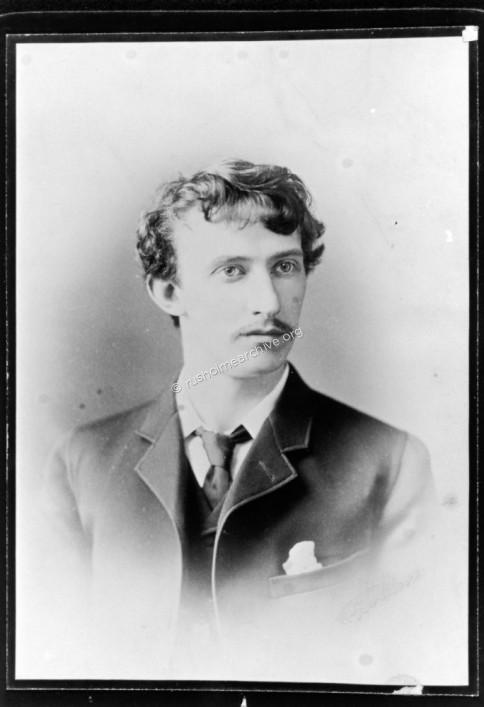
Studio portrait above of Charles Holden, ref DPA 1192/2
Reproduced with permission from the Documentary Photographic Archive held at Greater Manchester County Record Office
Photograph below, unknown sitters but sisters with dolls!
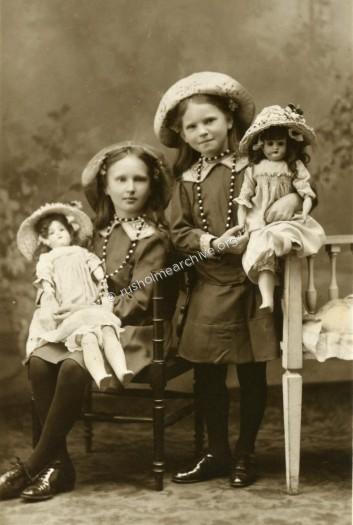
Miss Ede by Charles Holden
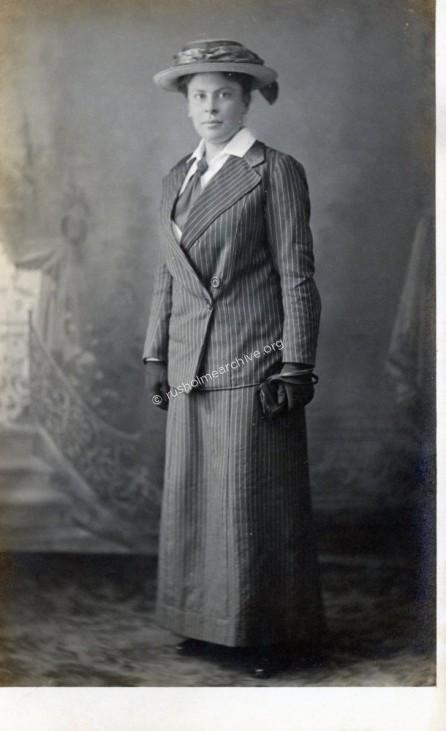
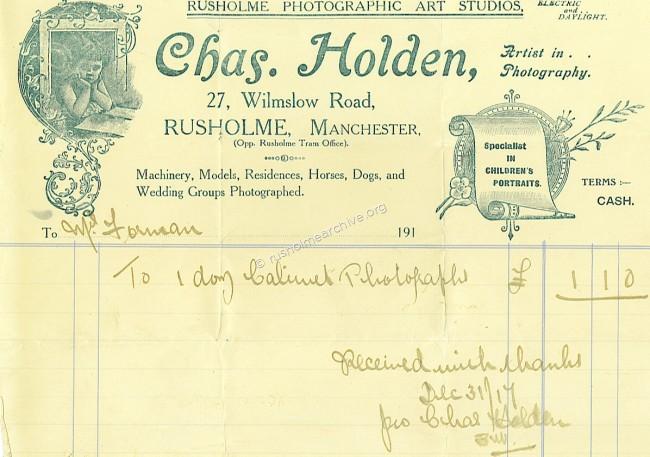
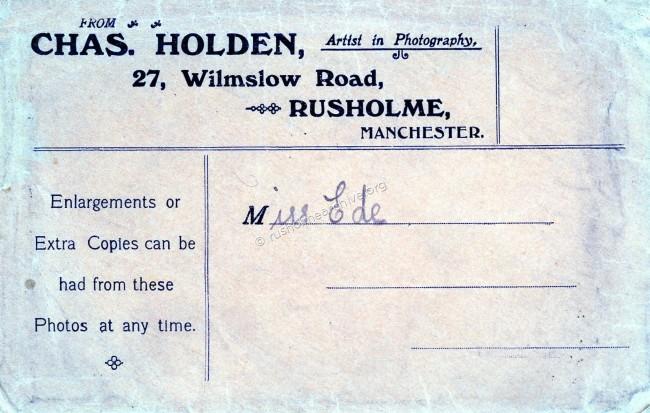
Charles Holden died in 1928, having given up his work some years after suffering a stroke.
Albert Meakes

In the list of Rusholme photographers there is an entry below Albert Meakes for WILLIAM PARR. Possibly he was a colleague who took over the studio in Victoria Street for the next two years, (1914-16). No photographs or other material known about Parr.
Albert Meakes 1871-1950
When I first compiled this page about Rusholme photographic studios it was it was almost inevitable that I would only be able to provide the most basic information. I have been able to source the material from a very useful book; Gillian Jones, Lancashire photographers 1840-1940 which simply provided name, address and the number of years in which the studio was functioning. The notes about Albert Meakes seemed to indicate that Albert left Rusholme during WW1 and I had presumed that he might have been on active service.
Recently, (March 2018), I was contacted by a Canadian resident, Rosemary Phillips who told me that she was the great grand-daughter of Albert Meakes.
I had presumed that during WW1 I thought that Albert Meakes had been on active service. Rosemary Philips kindly gave me some information about her family which together with some research on genealogical websites allows me to tell the following about Albert Meakes and his family.
Albert George Meakes was born in Petersham, Surrey in 1871, both his father and mother were identified as gardeners. In the 1891 census when he is 20 Albert describes himself as a photographer, living with his parents, a brother and sister at Chipping Barnet, Hertfordshire. Two years later, Albert is married to Isabella Wellings, the daughter of a blacksmith in her home village of in Stottesden, Shropshire. Albert gives his occupation as photographer and is resident in Rusholme, Manchester.
After their marriage Albert and Isabella are probably living at Earl Street, Rusholme, a trade directory of 1895 identifies Albert as a printer, (photographic?). The family then probably move to Victoria Street about 1896, (according to local rate books). All the photographs that I have come across certainly identify Albert Meakes studio at Victoria Street so perhaps 1896 is when the studio was established. Victoria Street was adjoining Wilmslow Road on the westerly side and just south of the Rusholme tram shed, where rents payable was generally around 40p weekly. Victoria Street has long been demolished, part of the slum clearance in the early 1970’s.
In 1901 the census lists the Meakes family at 12 Victoria Street with five children, Albert, William, Ada, Harold and Hilda. There are two boarders, Joseph Williamson, a calico printer and Wilfred Bird, whose occupation is photographer, (albeit he is ‘Working on own account’ so I presume he is working with Albert?)
There are only six rooms and a kitchen in No. 12, so with the studio in the house it must have been full of the five children and two boarders. Victoria Street must have been considered ‘respectable’, the occupations disclosed in the 1901 and 1911 census show a wide range; a violin maker, two policemen, a laundry owning family, a tailoring assistant, a clerk, a dressmaker and a joiner. One evident aspect when looking at the census information is that the families living in these houses to the west of Wilmslow Road are not employing servants.
10 years later when the 1911 census is completed Albert and his wife, Bella, have four more children; Nora, Mabel, Leonard and Queenie so there are 11 family members sharing the house, the second eldest son, William giving his occupation as photographer, presumably working with his father?
Rosemary, the great-grand-daughter of Albert Meakes has told me that after the outbreak of WW1 the family moved away from Manchester to Tottington, near Bury, just north of Manchester. Apparently, Albert decided his contribution to the war would be to take up his parent’s occupation and became a market gardener.
In 1915, like so many families, their eldest son, Albert Cecil was killed in action 25th September at the battle of Loos and is remembered at the Loos cemetery in France. Albert had volunteered at the outbreak of the war and was part of Kitchener’s ‘Second Army, (K2). Often the brief notes about a family losing their son/s is easily passed by, it being such a frequent occurrence. However, I have made a brief note about the circumstances of Alberts death, whether his family knew any of this, it would have been of little consolation for parents to lose their first-born or brothers and sisters to lose their ‘Big Brother’.
Albert Cecil served in the Seaforth Highlanders. The three-day battle at Loos was inconclusive, neither the Germans or Allies taking new ground, but the British losses were 50,000 men whilst German casualties were 25,000. It was also the first occasion that the British tried to use chlorine gas against the enemy, not altogether successfully as more than 2,500 allies were casualties of their own gas.
Major-General Richard Hilton, at that time a Forward Observation Officer, said of the battle,
"A great deal of nonsense has been written about Loos. The real tragedy of that battle was its nearness to complete success. Most of us who reached the crest of Hill 70, and survived, were firmly convinced that we had broken through on that Sunday, 25th September 1915. There seemed to be nothing ahead of us, but an unoccupied and incomplete trench system. The only two things that prevented our advancing into the suburbs of Lens were, firstly, the exhaustion of the "Jocks" themselves (for they had undergone a bellyfull of marching and fighting that day) and, secondly, the flanking fire of numerous German machine-guns, which swept that bare hill from some factory buildings in Cite St. Auguste to the south of us. All that we needed was more artillery ammunition to blast those clearly-located machine-guns, plus some fresh infantry to take over from the weary and depleted "Jocks". But, alas, neither ammunition nor reinforcements were immediately available, and the great opportunity passed."
The Loos Memorial commemorates over 20,000 officers and men who have no known grave.
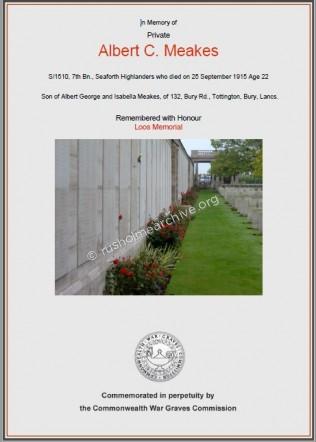
As so many young men were slaughtered in the trenches there was another consequence of the first world war that affected many lives.
As Rosemary Phillips said referring to three of her great aunts; ‘Three daughters remained single – there were no eligible men after the Great War. My grandmother Hilda married Ernest Harrison, inventor, and Mabel married Billy Nuttall… but Ada, Nora (Bunty) and Queenie (Pip) remained single. I used to call the above great-aunts the Dynamic Trio… they moved to Colchester and lived very long lives, sharing a house.
After the war in 1918 I think that Albert Meakes resumed work as a photographer – a 1924 Directory listed him as a photographer.
Confirmation of Albert working as a photographer in Tottington came from Helen Kingdon, who told me that her great aunt and paternal grandparents lived in Tottington. She has kindly sent me photographs taken of family relatives, (below), that show the Tottington studio stamp.
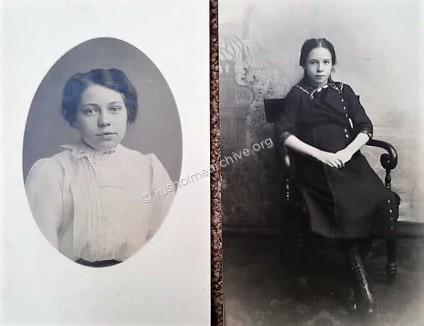
There was also another photograph of children in the Whit walks, (parading in heavy rain, see the adults holding umbrellas in the photograph below).
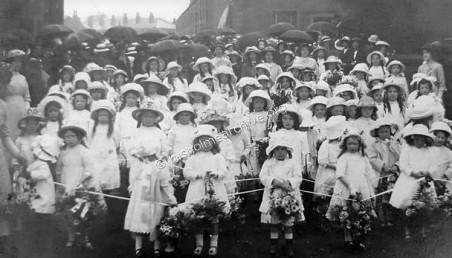
Again this photograph has the Tottington studio stamp but Helen has no knowledge of the children in the photographs. I would like to take the opportunity of thanking Helen for the information and allowing rusholmearchive to display the images.
However, by 1936 a Bury Directory identifies Albert as a gardener. I suspect that after the first World War the formality of posed photographs was less in demand, there were easily used simple and inexpensive cameras available so there was much less demand for a professional photograph in a studio.
Two of Alberts sons emigrated to Canada, (see below), Harold stayed in Canada, but Billy returned to the UK where he too became a gardener near Colchester in Essex.
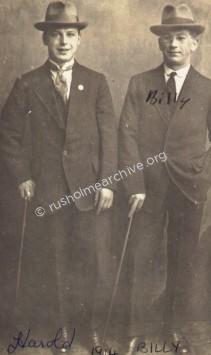
The three unmarried sisters, Ada, Nora (Bunty) and Queenie (Pip) also settled in Colchester where they established a home where eventually their mother joined them after the death of Albert.
Albert died at Tottington in 1950 age 79, having brought up a large family on probably a modest income he was not a wealthy man, his estate was valued at just over £100.00. As mentioned earlier his widow, Bella probably moved to join her three daughters in Colchester and she died there in 1954.
I should like to take the opportunity of thanking Rosemary Phillips, the great grand-daughter of Albert Meakes for help with information about her family. Rosemary who lives in Canada also very kindly sent me several family photographs, the last of which is below, a photograph of her great grandfather,
Albert Meakes – the photographer photographed!
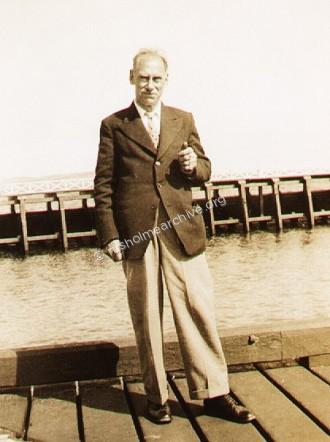
As a final note if you do come across a photograph with the name of Meakes,12 Victoria Street it is worth remembering the story of their lives………………………………
There are eight photographs below that have the Albert Meakes Rusholme stamp on them, the final one being (presumably?) a wedding cake.
The first image below was sent to me by Anne McKay, she told me that she found the photograph amongst her parent’s possessions. She is not aware of any family members in the Manchester area and has no knowledge of the sitter or the date. The dress and style make me think the photograph was probably from the earlier days of the studio, (1870’s?) but if there is any visitor to the site who has any knowledge of the sitter I would be very pleased to hear………………….
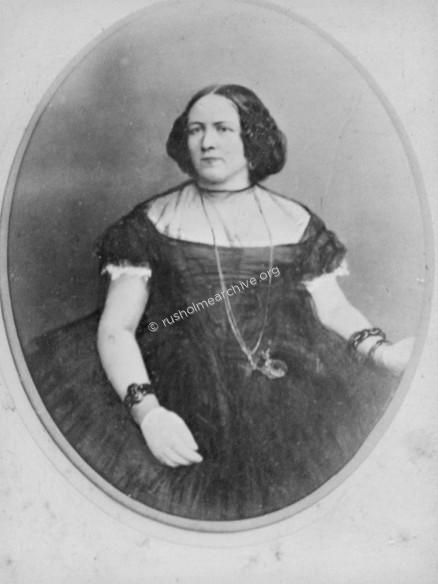
Below is an unknown family portrait; Unusally posed in a garden setting, but I think, a charming family(?) group.
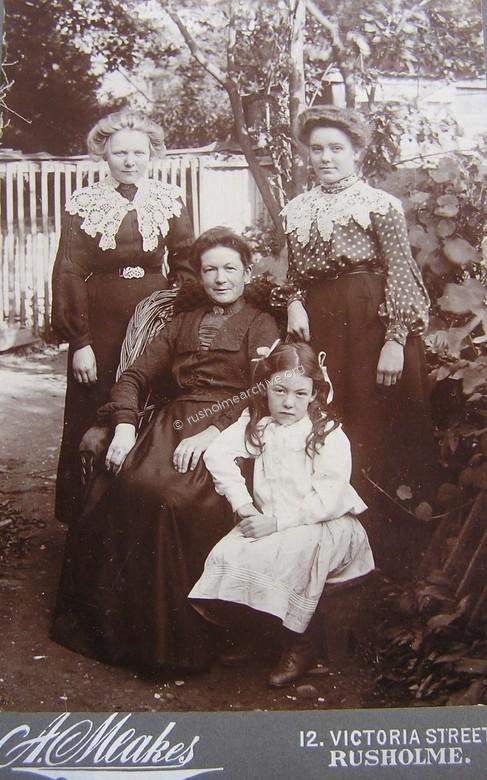
Below; Again, an unknown family group, rather formally posed in the studio.
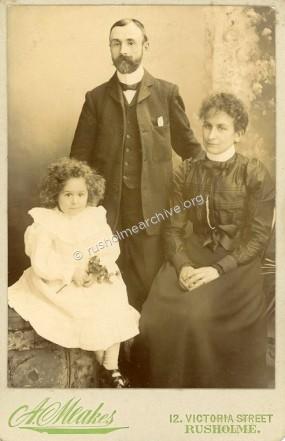
The photograph below is unusually away from the studio and shows a family group outside (presumably?) their home in Ossory Street, Rusholme. The house is still there but the window frames and curtains have changed!
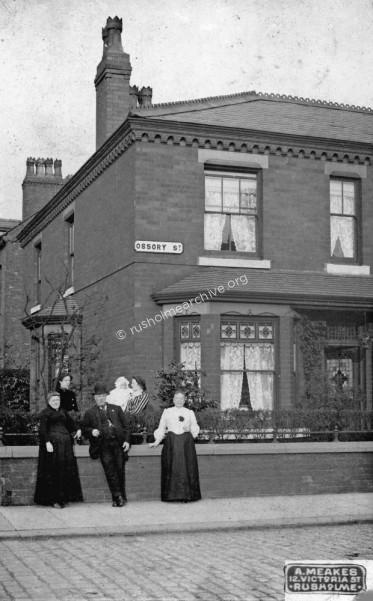
The photograph below is I think is a local postman or telegraph boy?
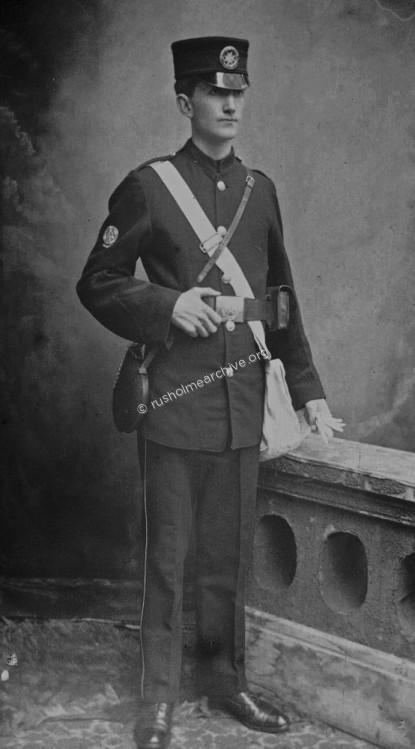
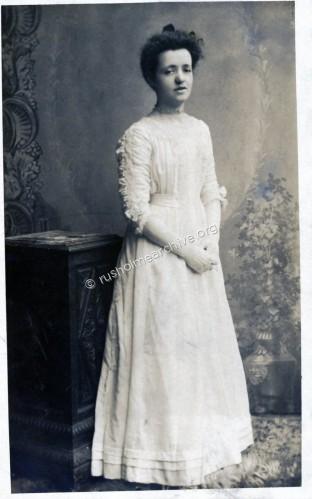
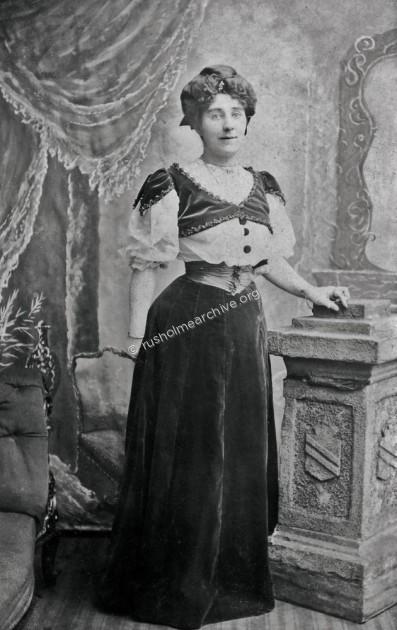
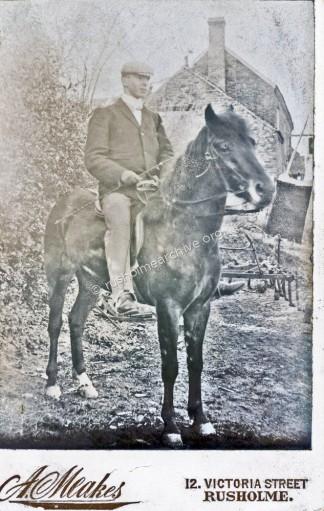
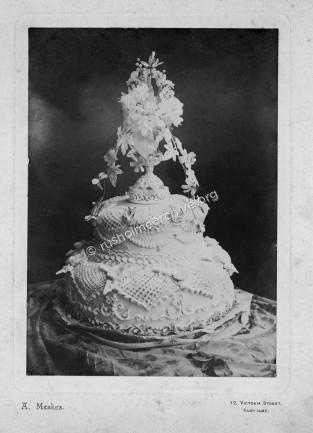
Frederick Sellers
Frederick Sellers, 61 Monmouth Street, Rusholme worked at this address for about four years between 1896 and 1900 - I have found no other reference to Sellers except in 1912 when he was working as a photographers salesman. He was before the magistrates court for deserting his wife and three children..................
The photograph below of the young man is sitting in a chair draped with a bear skin(?) as a seat cover and curiously for the time a very plain background.
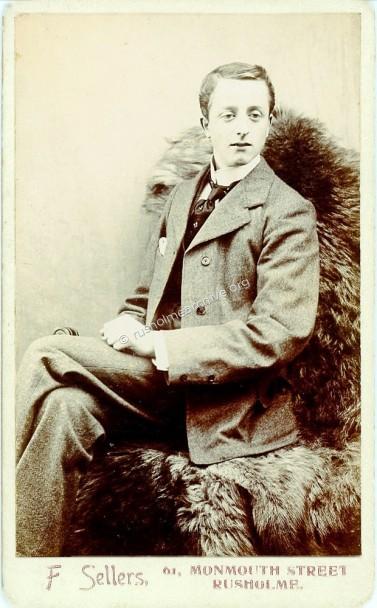
The photograph below is presumably the lady with her favourite - a Jack Russell (?)
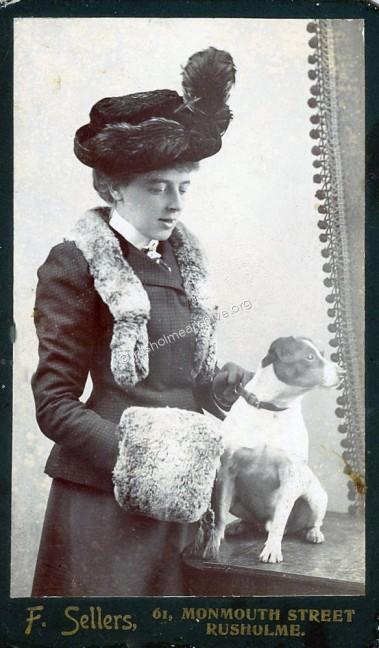
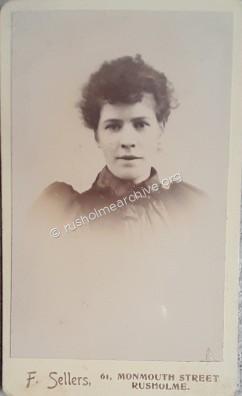
Frank Beaumont Wyles, Birch Studio, 124 Dickenson Road, Rusholme
Frank Wyles was born in July 1877 at Chatham, Kent, the son of a farmer. When he was 24 Frank is described in the 1901 census as a photographer and employer, judging from one of the photographs of him below he was a partner in the studio of Jacques Moll & Wyles.
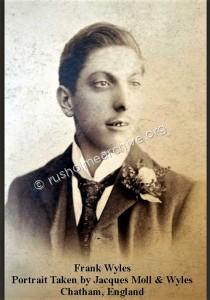
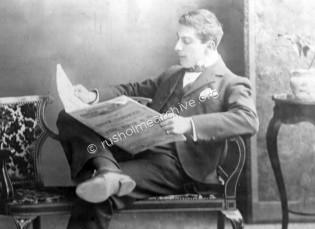
1903 Kelly’s Directory lists Frank Wyles at the Broadway Studio, (facing S.E. Railway Station).
In April 1903 Frank married Flora Stovold at Tunbridge Wells, Kent. The local paper, The Courier, referred to the occasion as ‘A Pretty Wedding’ and said that. ‘Both the bride and bridegroom, and also their respective families, are well known in the town, and the wedding evoked much interest’.
By 1905, according to Kelly’s Directory the young couple had moved to 8 Church Street, Blackpool where presumably Frank had opened a studio, and it was here in Blackpool that they had a son called Eric. I am afraid I cannot find any specific evidence about when they settled in Manchester but Gillian Jones in her compendium, Lancashire Professional Photographers 1840 – 1940, shows the Birch Studio at 124 Dickenson Road between 1909 and 1939. Frank & presumably with Flora, his wife ran the business for some 30 years from 1909 until 1939.
Their son Eric did not join the family business, instead he trained as a GPO telegraphist and then worked as a ships radio officer. His name frequently appeared in the various shipping registers, particularly travelling between Liverpool and South America.
Frank Wyles died in 1933 when he was only 56, Flora, his widow continued running the studio until the outbreak of war in 1939, she survived her husband by some 26 years, dying age 83 in 1959, they are both buried in Manchester Southern Cemetery. When Frank died in 1933 probate valuation of his estate was £2055.00, a comparatively tidy sum. You can see below the figures below that have been computed to a comparative valuation today.

I should like to take this opportunity of thanking Laurel A. Beechey of Ontario, Canada who is a member of the somewhat extensive Wyles family! Her research on Ancestry enabled me to post the information above!

Above is the imprint found on Birch Studio Photographs and below an advertisement from a programme from Harry Leslie's Concert Pavilion - dated May 1908, the Birch Studio charge for cabinet photographs are half the price at Charles Holden
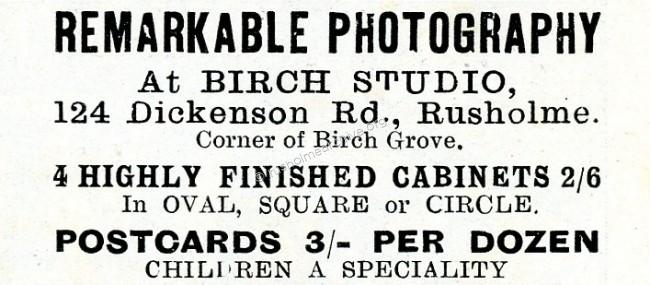
Frank and Flora were prolific in their output from the Birch Studio, many photographs have survived with the Birch Studio imprint and address embossed into the paper. It was not just studio portraits but weddings, school pictures, sports, workplace pictures etc all appeared in front of the Birch Studio camera.
Looking at the pictures below does it seem that the photographs were perhaps more of the 'local' population than some of the 'grandees' of Victoria Park? Particularly some photographs are obviously of service men with their families; did they ever return from WW 1?
The photograph below is dated April 1918 and has a Levenshulme address on the rear. My curiosity is about the arm-band with the MID emblem. The only MID that I know of during WW1 refers to 'Mentioned in Dispatches', but that could not be this sitter(?),and what are the cuffs meant to refer to? Perhaps somebody does know and I would be pleased to hear!
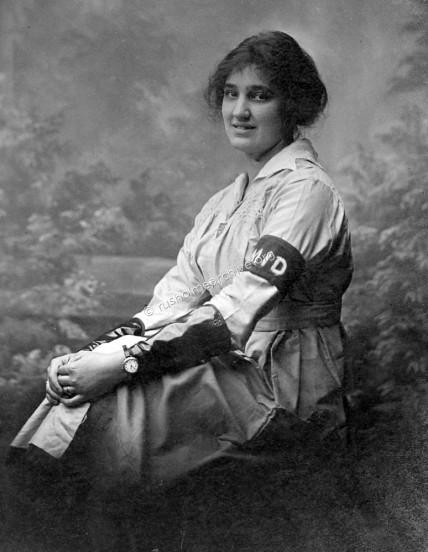
The photograph below was taken in September 1926. Still in the orginal Wyles folder it was a wedding at St.Andrews in Levenshulme between Noel Michael and Mabel Woods. The photograph was sent to rusholmearchive. org by Harry Mayronne, great-nephew of the groom Noel.
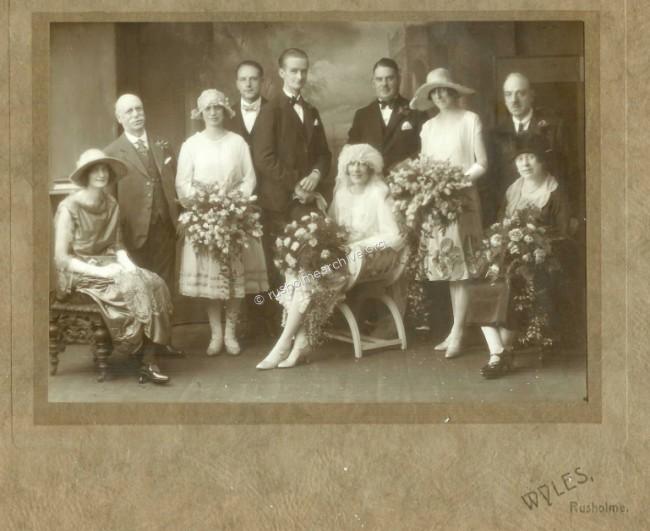
The photograph below is marked on the back, 'May 25th 1922, 3 Birch Grove'.
The photograph would appear to be two sisters(?). with children sitting - are the older women with young relatives? or pupils of music or elocution?
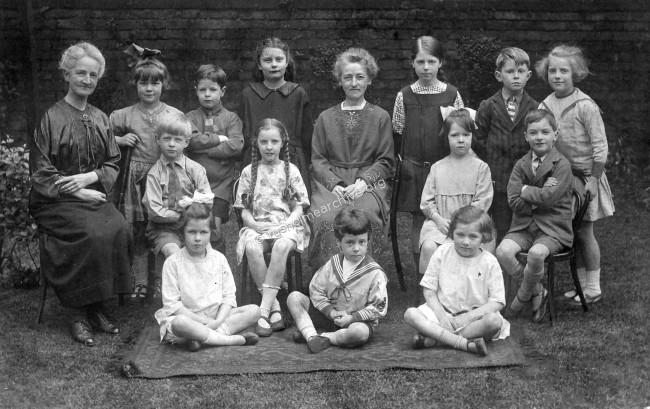
Are the two photographs below from school plays?
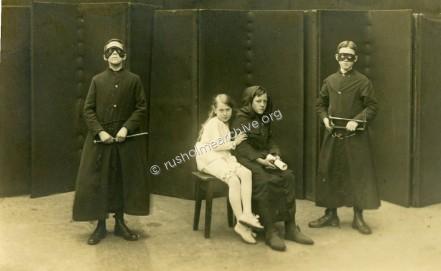
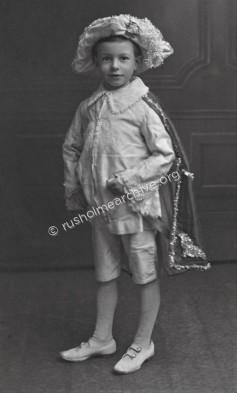
The collection below is largely of unknown sitters, once these photographs were proudly displayed in frames on a sideboard, sent to family at Christmas or certainly filled family albums.
Now they are the unloved and dis-possessed, trading on Ebay and at postcard fairs with little or no thought that they were once pleased to be photographed in their local Rusholme studio. In some instances there is a brief note on the back with a name.
Minnie & Hettie Watkins (?) of 189 Denmark Road
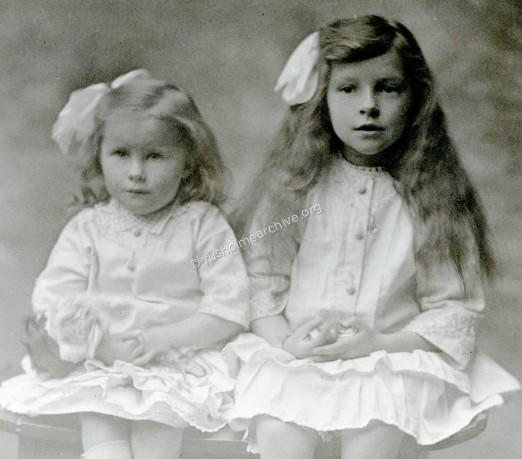
E Heyes 1914
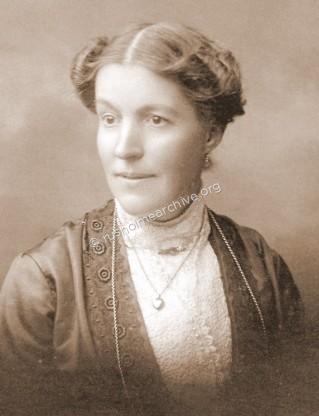
The photograph below is of pupils of Longsight Grammar School. I think it started in Victoria Park but eventually moved to Longsight. The headmaster, standing in the centre was the Rev. Fryer.
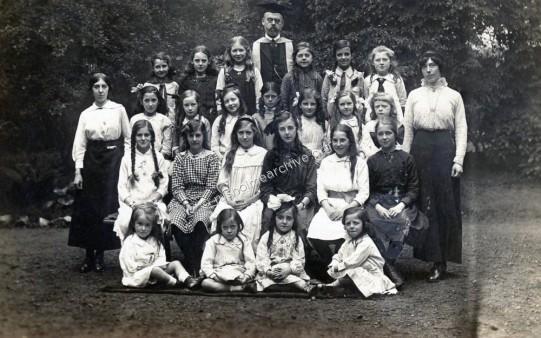
Clearly nurses, were they from a Rusholme Military hospital?
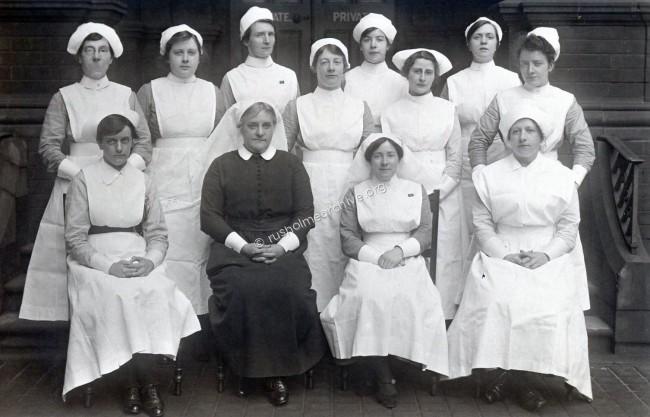
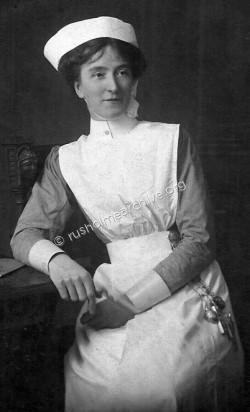
Three photographs below, believed to be St James Rugby Club players, 1920's?
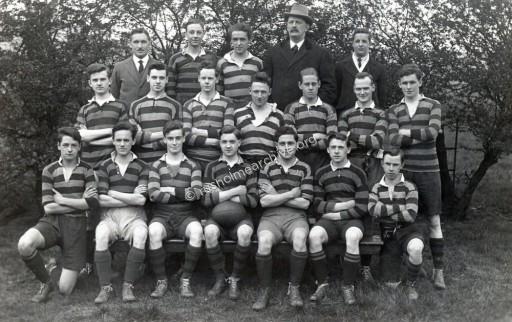
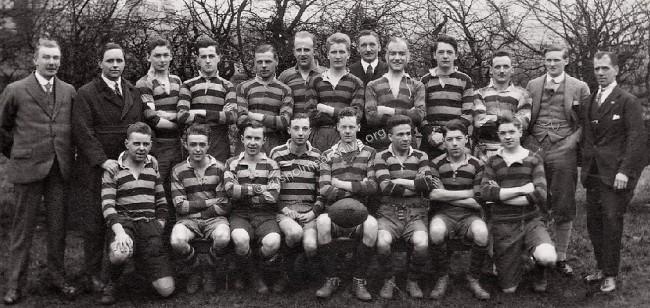
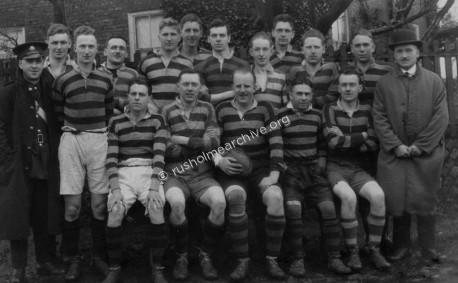
Young girls in their swimming costumes, most showing prize medals pinned in place. The young girl with VSC on her costume was a members of the Victoria Swimming Baths Club - doe the 'LSC' on the other costumes refer to Longsight Swimming Club? Undated but was this a photograph taken at the end of WW1 at the Wyles Studio?
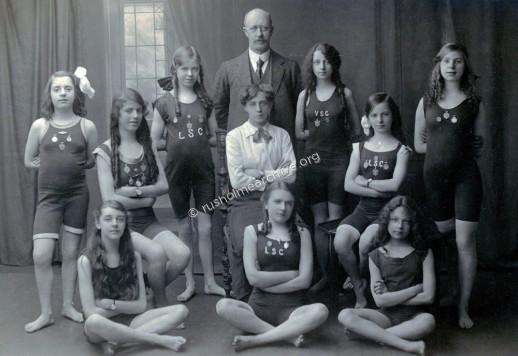
Emily and Bernard
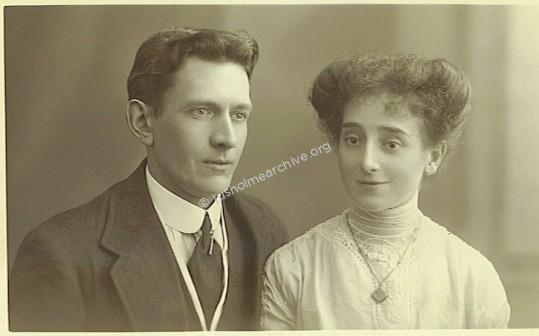
Lucy 1917
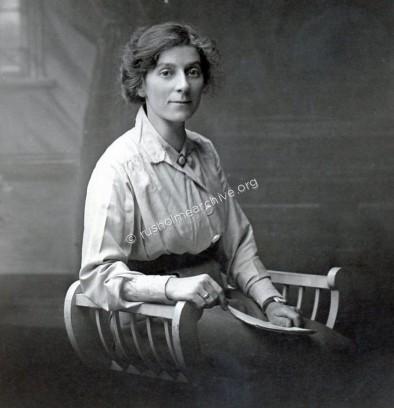
Wedding photograph of Norman & Doris, Mr & Mrs Barnes on the left, Ada & 'Big Jim' on the right, undated but 1920's ?
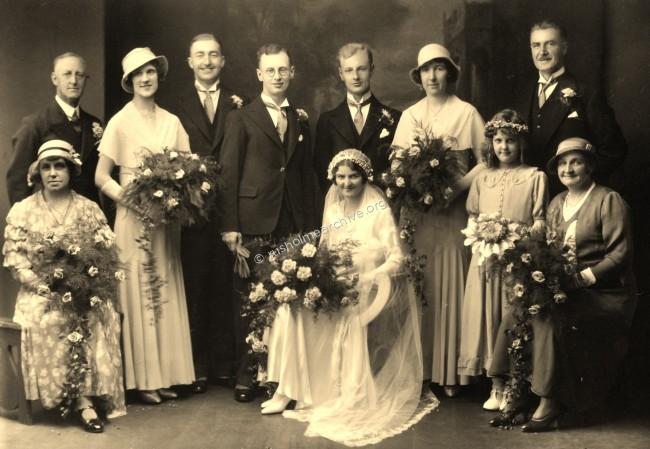
Perhaps another wedding photo below, post WW1 ?
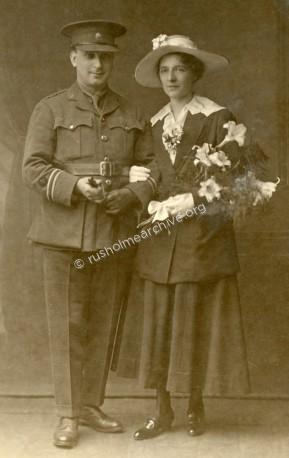
William Royle of Rusholme, the local historian, noted Liberal Party activist, cotton merchant, and above all the man that 'saved Platt Fields'
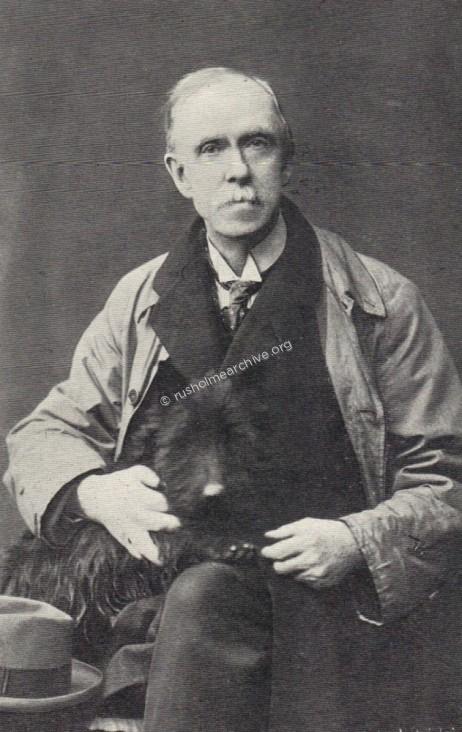
The photograph below is up to you to guess what is intended....................
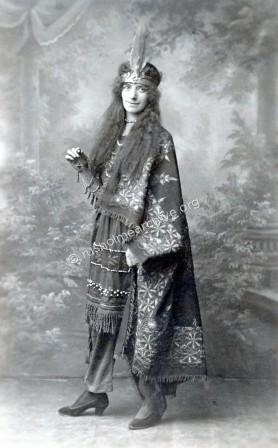
Family photograph below must have been a true likeness?
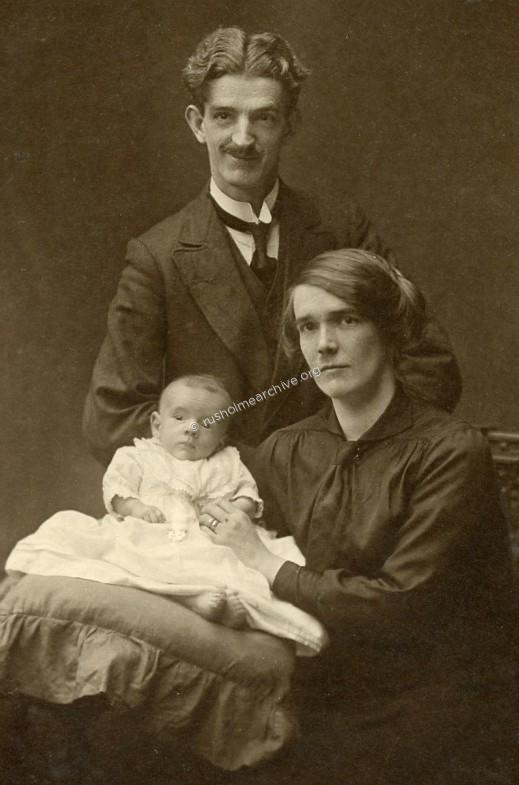
Naval Reserve Officer, unknown sitter
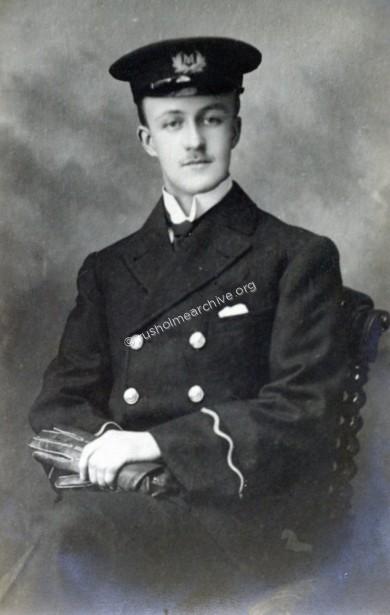
Gallery below of servicemen, unknown & undated - but presumably WW1 Click your mouse on the image to expand.
Duke of Lancaster Own Yeomanry - a fine helmet and sword!
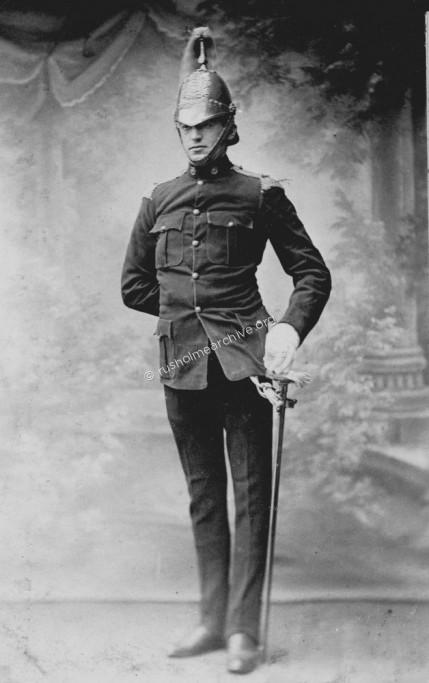
Sergeant, WW1, Duke of Lancasters Own
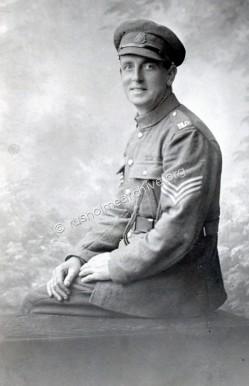
WW1 Corporal, Kings Own Scottish Borderers 'Yours very sincerely, Ernest 2nd Jan 1917'
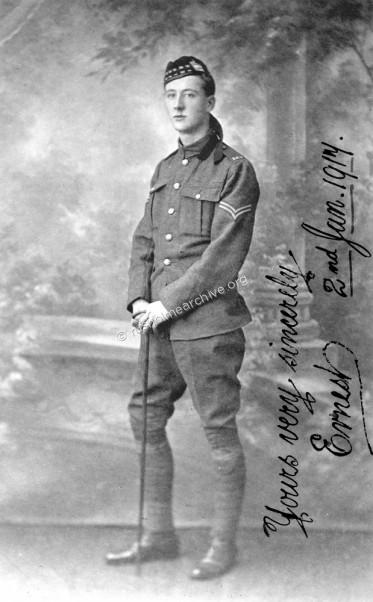
Edwin, in his Scout uniform
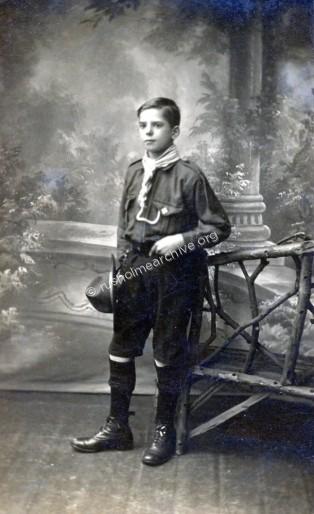
Below gallery is all of generally unknown & undated sitters, remember to click your mouse on the image to expand.
If you have photographs from any of the above photographers and would like them to be considered for inclusion please contact admin@rusholmearchive.org
